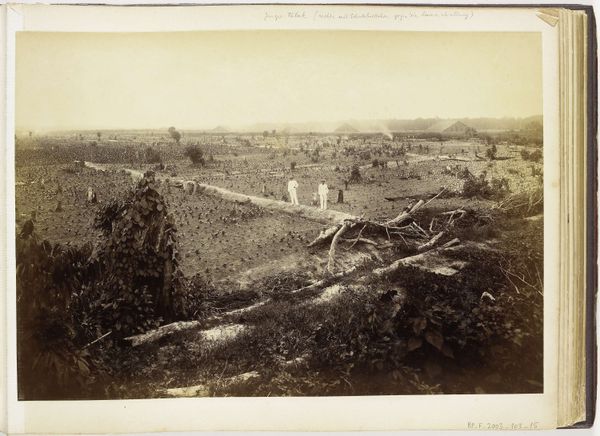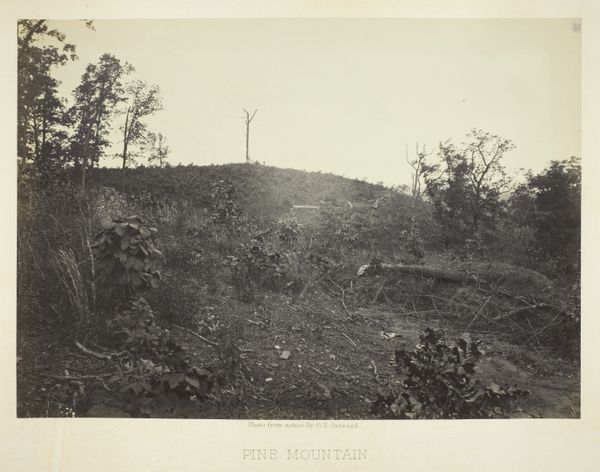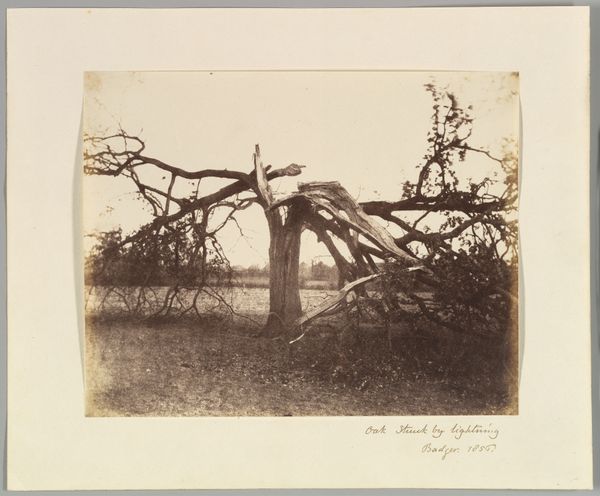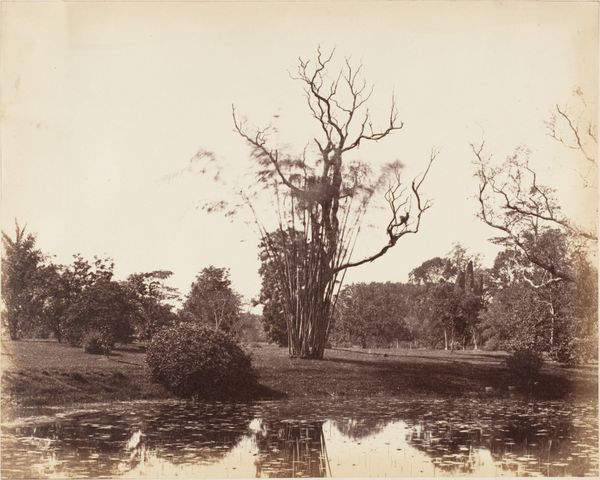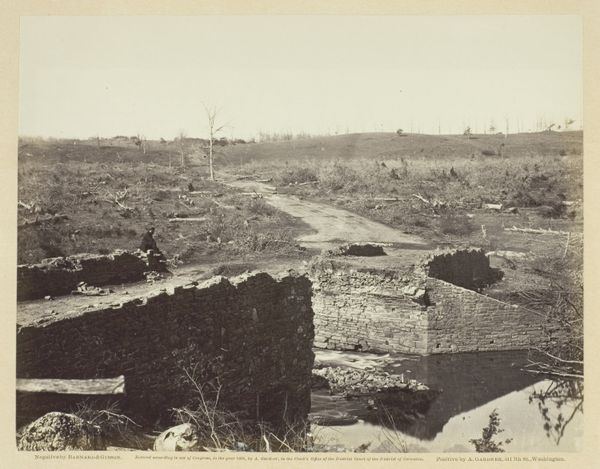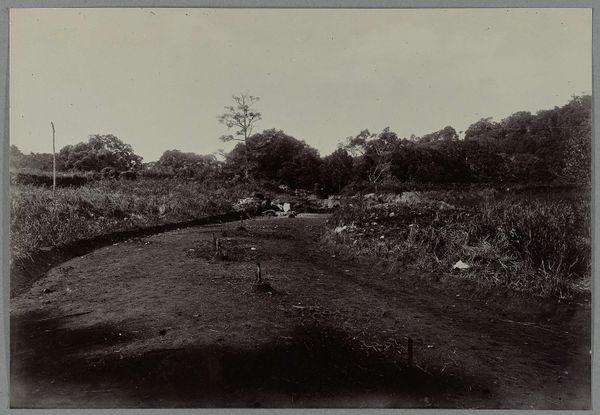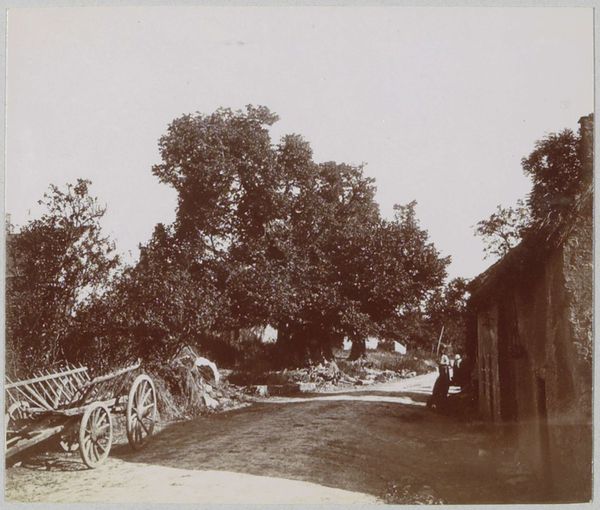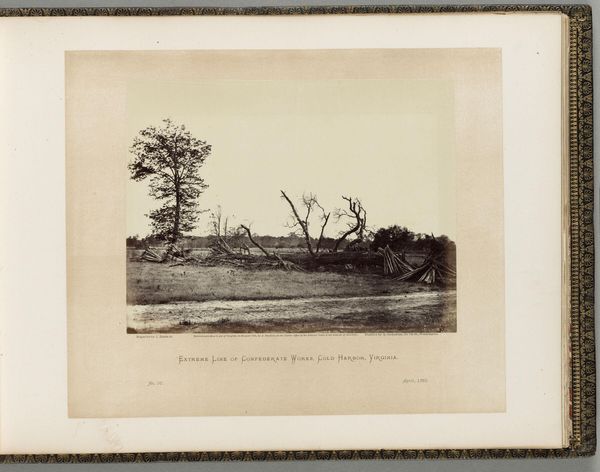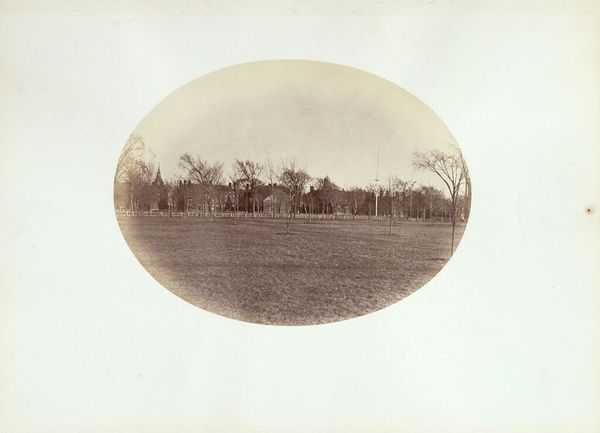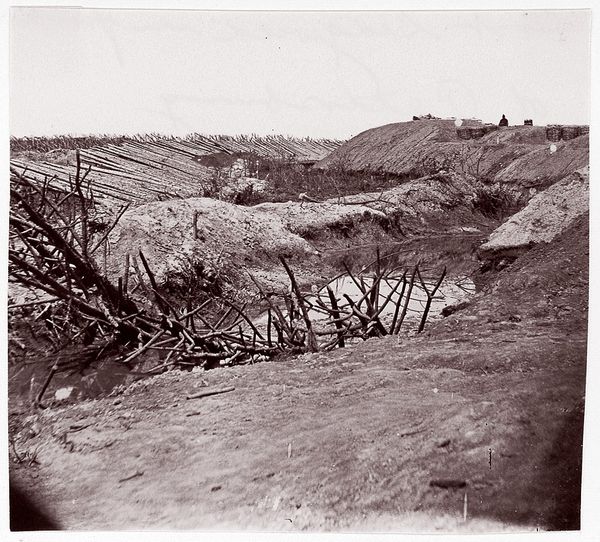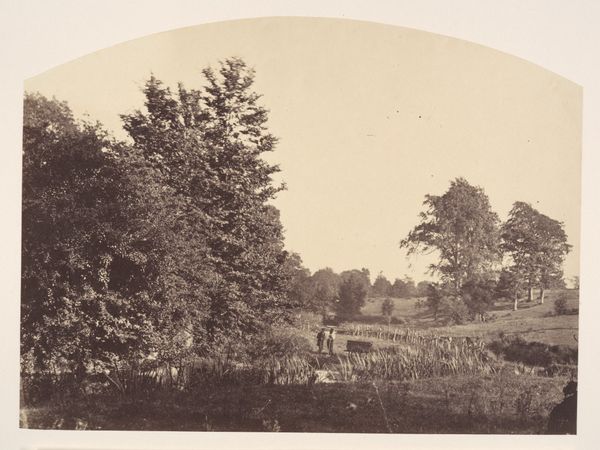
Extreme Line of Confederate Works, Cold Harbor, Virginia 1865
0:00
0:00
print, photography, gelatin-silver-print
#
16_19th-century
# print
#
war
#
landscape
#
photography
#
gelatin-silver-print
#
men
#
united-states
#
pencil work
Dimensions: 17.2 × 22.6 cm (image/paper); 31 × 44.5 cm (album page)
Copyright: Public Domain
Curator: This is “Extreme Line of Confederate Works, Cold Harbor, Virginia,” a gelatin-silver print taken in 1865 by John Reekie. The image forms part of the extensive photographic record of the American Civil War. Editor: It strikes me immediately as desolate. The broken fence and fallen trees under a bleached sky convey such a sense of loss and destruction, don't you think? It's incredibly still, almost haunting. Curator: Indeed. What Reekie captures so powerfully here, beyond the mere scene of a battlefield, is the infrastructure of war. He depicts how it literally consumes the landscape, reorganizing it towards deadly purpose. Think about what the fences originally were– property markers, the limits of a farm or home. Now, it’s a barrier to halt the enemy. Editor: It also underlines how profoundly war alters identity. It wasn’t just battles fought between armies. It forced people to decide– often with tragic consequences– where they stood on issues of union, slavery, and power. I find myself wondering what community used to exist here, what divisions this place then embodied and deepened. Curator: That point of identity is key. Understanding the Confederacy, we should acknowledge how this imagery, even in its apparent stark realism, served a role in the mythology that the ‘Lost Cause’ subsequently perpetuated. These desolate scenes were meant to convey not just destruction, but a kind of tragic nobility. Editor: That's it, isn't it? It’s critical to resist any romantic interpretation of the imagery, as it erases the realities of slavery and the violence inflicted to maintain it. Viewing this with that lens gives it even more of an impact because it makes the audience think critically of this photograph. Curator: Precisely. By revealing the transformation of ordinary landscapes into war zones, it opens an important discussion about the war's enduring repercussions and questions of cultural memory. Editor: Ultimately, this image pushes us to consider the war, not as a conflict of glorious battles, but as a human catastrophe permanently inscribed on the American landscape and psyche.
Comments
No comments
Be the first to comment and join the conversation on the ultimate creative platform.
